|
|
ADDRESS AT THE CONVOCATION OF MANIPUR UNIVERSITY, IMPHAL, MANIPUR
16-10-2006 : Imphal
Empowering the Youth
I am delighted to participate in the Convocation of Manipur University, Imphal. I take this opportunity to greet all the teachers, students and staff of this University. Today I would like to share with you few thoughts to the student community.
Learning gives creativity
Creativity leads to thinking
Thinking provides knowledge
Knowledge makes you great
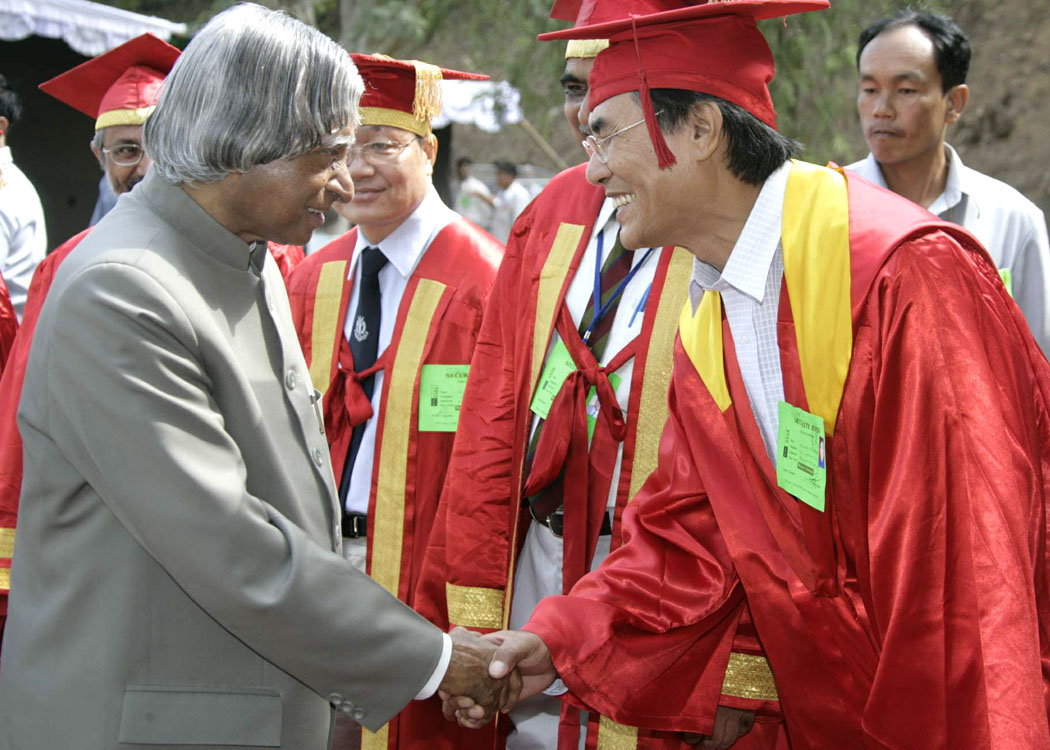
The student life is indeed a continuous process of acquisition of knowledge that makes him or her prepared for the way of life beyond student life. Manipur University being at the apex of the educational pyramid of the State of Manipur has therefore a dynamic and challenging role to discharge by way of enriching the State, the North-eastern region and thereby the nation as a whole.
The topic I have selected for the convocation "Empowering the Youth".
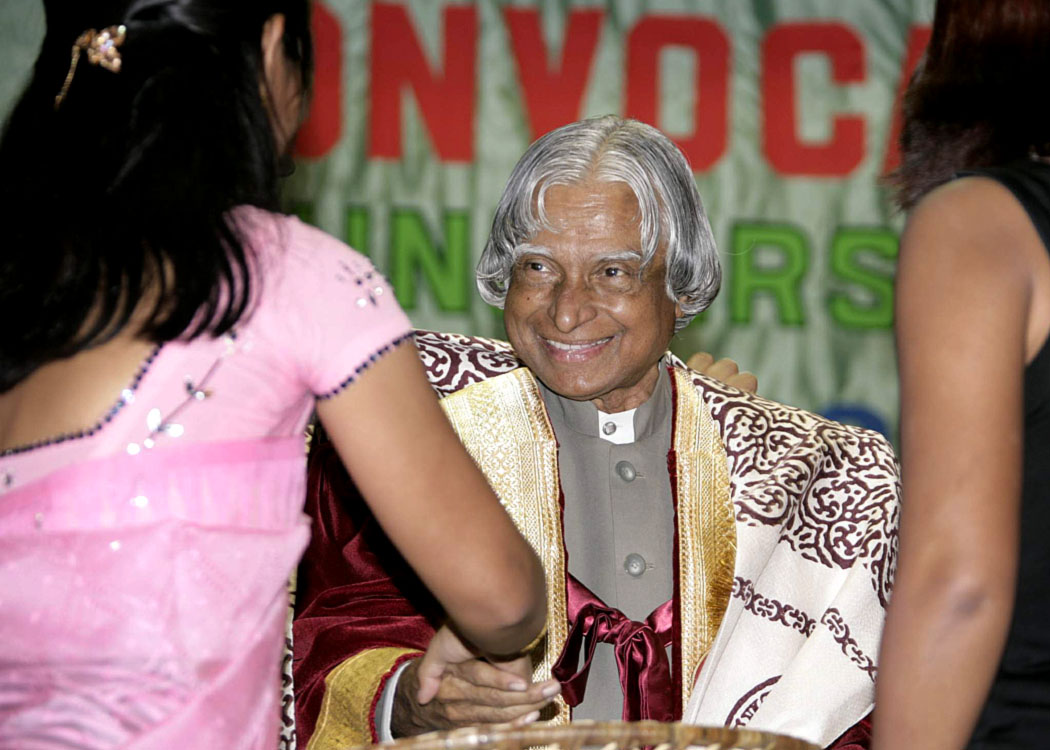

Research - Teaching - Research
Any University is judged by the level and extent of the research work it accomplishes. This sets in a regenerative cycle of excellence. Experience of research leads to quality teaching and quality teaching imparted to the young in turn enriches the research. Research brings transformation and development and also enhances the quality of education. Both the research and teaching go together in good colleges and universities. I am sure Manipur University will be known for their innovation in education and research task.
Technology is the non-linear tool available to humanity, which can affect fundamental changes in the ground rules of economic competitiveness. Science is linked to technology through applications. Technology is linked to economy and environment through manufacture of knowledge products. Economy and environment are linked to technology, which promotes prosperity to the society. We have to use innovation to generate high value added products for becoming a global player. Manipur university has to be known for scientific research and teaching in this region. This has to be consolidated and the expanded research areas of the Manipur University must be linked to the priorities of the state and the nation.
The entire Northeast and Manipur in particular is known for its rich bio-diversity. The university must marshal its resources to develop a database of bio-diversity resource available in the State and suggest how best to use it economically without causing environmental degradation. Research on development of herbal medicinal products needs greater focus. I visualize Manipur state having herbal farms and also transform herbs to drugs. Manipur should aims to have a pharma company. This would help in providing employment opportunities to our youths and give fillip to industrialization in the state.
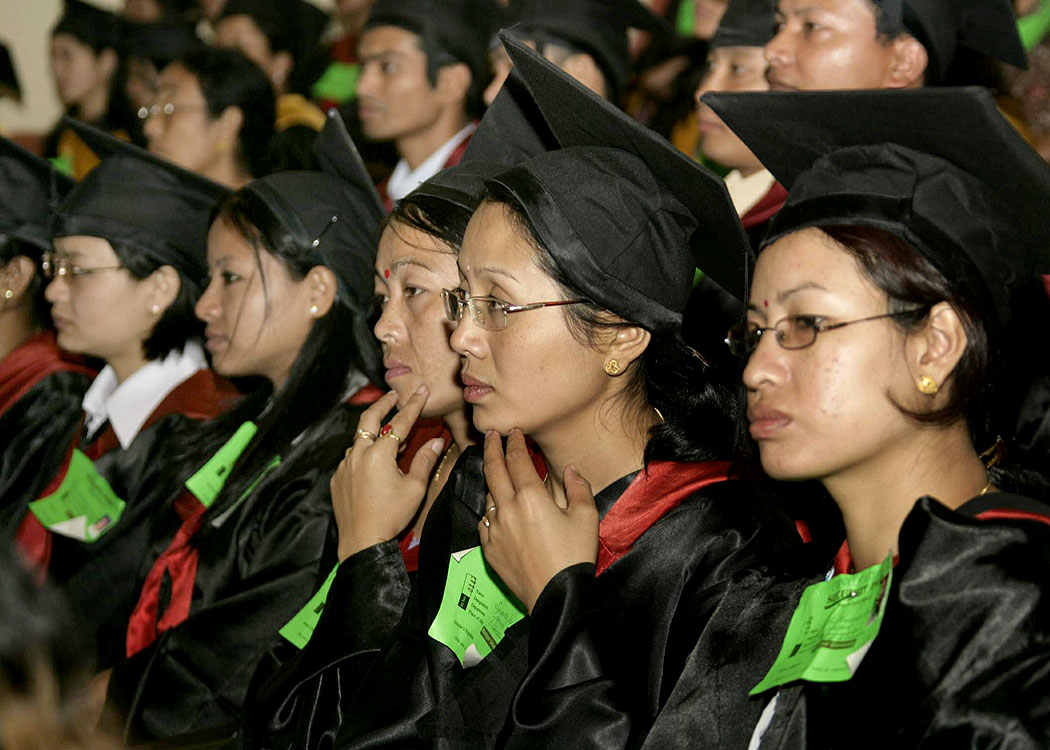
Even in the valley areas, I understand that there is copious rainfall during the monsoons but the water gets drained away and the crops suffer on account of arid conditions during the summers. Will it not be a big boon for the State and its people if the university academia can research on water management and harvesting techniques? There is a big expectation from the university now that it has also been adorned with the much-desired Central university status that it lives up to the local needs of the people.
Now, I would like to discuss about the capacities which are required to be built in students by the University.
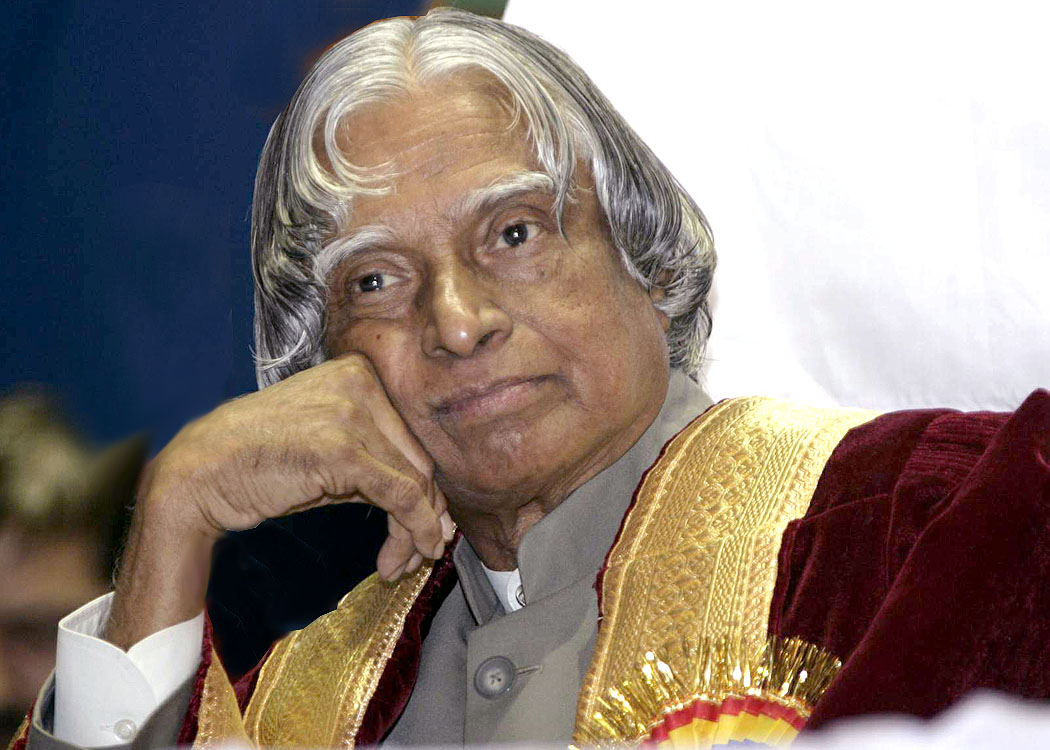

Capacity Building
A good educational model is the need of the hour to ensure that the students grow to contribute towards the economic growth of a nation. Normally, research, technology and performance in the three sectors namely agriculture, manufacturing and services lead to economic growth. Can we sow the seeds of capacity building among the students? There will be continuous innovation during the learning process. To realize this, special capacities are required to be built in education system for nurturing the students. The capacities, which are required to be built, are research and enquiry, creativity and innovation, use of high technology, entrepreneurial and moral leadership.
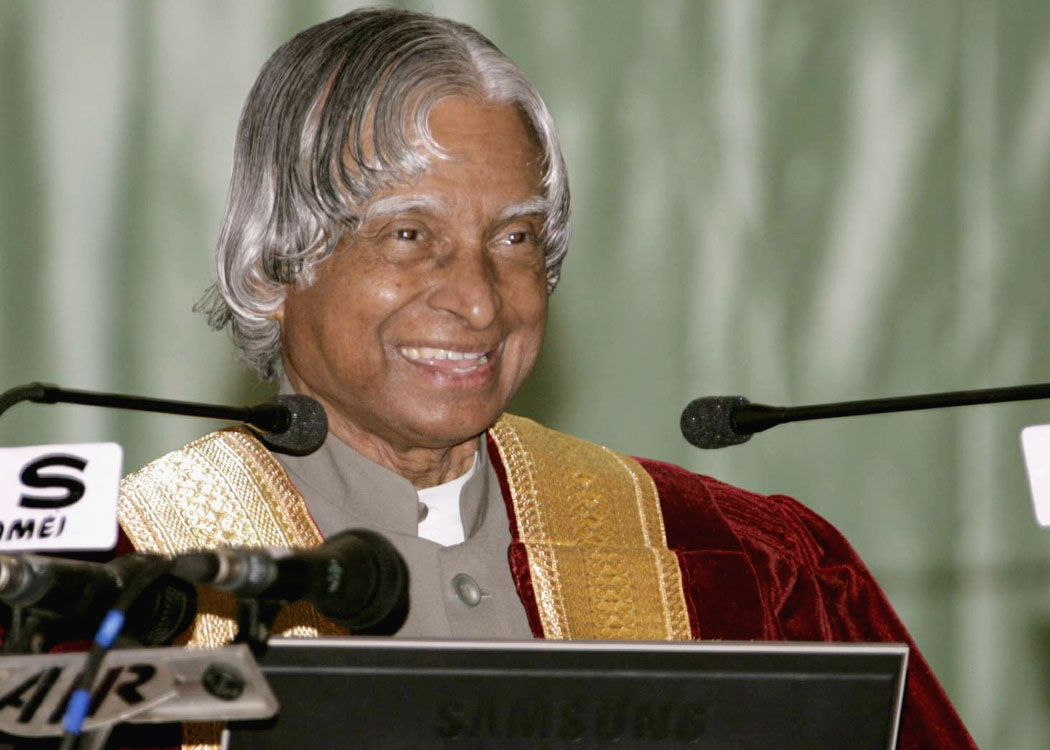
Research and enquiry: The 21st century is about the management of all the knowledge and information we have generated and the value addition we bring to it. We must give our students the skills with which they find a way through the sea of knowledge that we have created and continue with life long learning. Today, we have the ability, through technology, to really and truly teach ourselves to become the life-long learners. This is required for sustained economic development
Creativity and innovation: The management of knowledge in the 21st century is beyond the capacity of a single individual. The amount of information that we have around is overwhelming. The management of knowledge therefore must move out of the realm of the individual and shift into the realm of the networked groups. The students must learn how to manage knowledge collectively. When the information is networked the power and utility of the information grows as square as stated by Metcalfe's law. Information that is static does not grow. In the new digital economy information that is circulated creates innovation and contributes to national wealth. In this connection, I am happy to note that the Rani Durgavati University is a partner in the Interact India Programme (IIP) which envisages integration of international/intercultural dimensions into the teaching, research and service functions of the education system. This could promote spread of the values and culture and could help create better mutual understanding at global level. Ancient India in places like Nalanda University successfully experimented such interaction and attracted a number of foreign students.
Capacity to use high technology: Every student in our colleges should learn to know how to use the latest technologies for aiding their learning process. Universities should equip themselves with adequate computing equipment, laboratory equipments, and Internet facilities and provide an environment for the students to enhance their learning ability. In the midst of all of the technological innovations and revolutions we cannot think that the role of the teachers will be diminished. In fact the teacher will become even more important and the whole world of education will become teacher assisted and would help in "tele-porting" the best teacher to every nook and corner of the country and propagate the knowledge.
Entrepreneurship: The aptitude for entrepreneurship should be cultivated right from the beginning and in the university environment. We must teach our students to take calculated risks for the sake of larger gain, but within the ethos of good business. They should also cultivate a disposition to do things right. This capacity will enable them to take up challenging tasks later.
Moral leadership: Moral leadership involves two aspects. First it requires the ability to have compelling and powerful dreams or visions of human betterment. Moral leadership requires a disposition to do the right thing and influence others also to do right things. In sum, inquiry, creativity, technology, entrepreneurial and moral leadership are the five capacities required to be built through the education process. If we develop in all our students these five capacities, we will produce ?Autonomous Learner? a self-directed, self controlled, lifelong learner who will have the capacity to both, respect authority and at the same time is capable of questioning authority, in an appropriate manner. These are the leaders who would work together as a ?Self-organizing Network? and transform any State as a prosperous State. The most important part of the education is to imbibe the confidence among the students is the spirit of ?we can do it?. These capacities will enable the students to meet the challenges of our national mission of transforming the nation into a developed country by 2020.
Let me now focus on how to empower the youth to become entrepreneur.

Adding value to education through Entrepreneurship
There has been substantial growth in our higher educational system and we are generating over 3 million graduates every year and over seven million plus two level candidates who are aspiring for employment. However our employment generation system is not in a position to absorb all these youth leading to increase in educated unemployed, year after year. This situation will lead to disturbance in the social structure. We need higher education backed by employment opportunities. A multi pronged strategy is needed to make education more attractive and simultaneously create employment potential ? how do we do that?
Firstly, the educational system should inculcate by adding syllabus of entrepreneurship and prepare the students right from the school and college education to get oriented towards setting up of the enterprises which will provide them creativity, freedom and ability to generate wealth. Apart from entrepreneurship, the youth should have the spirit that ?we can do it?. Secondly, the banking system should provide venture capital right from every village level to the prospective entrepreneurs for undertaking new enterprises. Banks have to be proactive to support the innovative products for enabling wealth generation by young entrepreneurs. Thirdly, there is a need to identify marketable products and enhancement of purchasing power among the people. This can come through the implementation of mega programmes such as PURA, Interlinking of Rivers, Infrastructural missions, Power missions and Tourism.
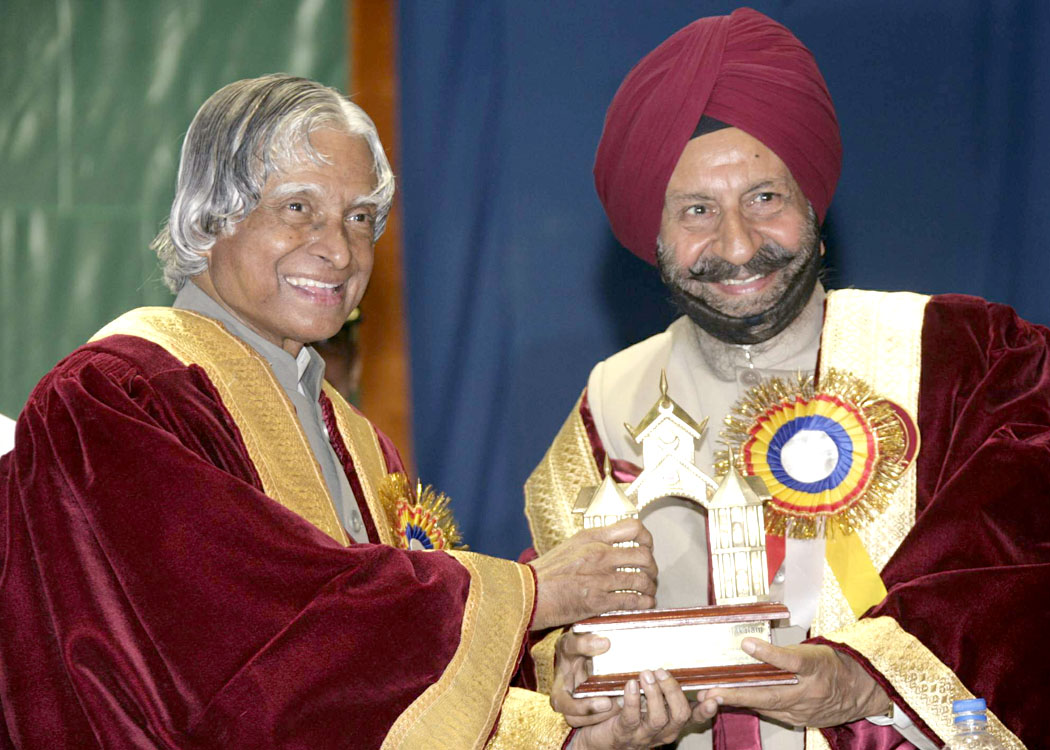

Border Trade
In the present WTO regime of globalization, liberalization and removal of trade barriers, exploration of border trade links with the neighbouring countries are on the rise. Manipur shares its borders with Myanmar and the other North-eastern states with Bhutan, Tibet, China and Bangladesh. The university can consider taking up special courses to facilitate border trade. Research projects seeking to produce a wealth of useful data in evaluating trade prospects in select sectors so as to enhance economic opportunities for the people ought to be encouraged. Short-term skill courses on how to develop the spirit of entrepreneurship and sharpen trading skills can be given impetus. Language often acts as a barrier to trade. It will be highly meaningful if the university can consider launching certificate and diploma courses in the foreign languages spoken in the neighbouring countries to impart the requisite linguistic proficiency and skill amongst our students.
Here I would like to mention one of the employment generation model, which will empower the Self-Help Groups, and the youth of the rural areas of Manipur to take up the mission in the bamboo and handicrafts development.
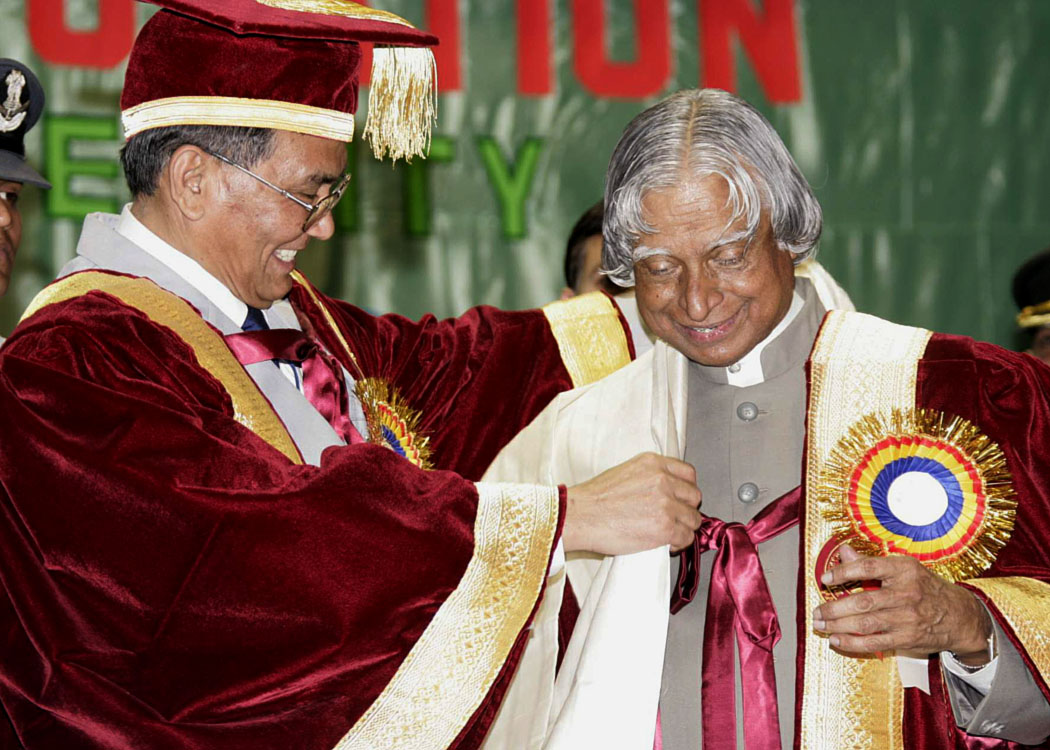

One Village One Product
I would like to mention the handicraft promotion work taking place at Chhindwara and Seoni in Madhya Pradesh with governmental and JETRO of Japan, cooperation for the promotion of ?One Village, One Product?. Here the development of interior life style articles is taking place with the suggestions from JETRO technical experts. After prototypes are made, the product is being sent to Tokyo market for presentation in exhibitions for getting a feedback from the users. The feedback is used to further improve the product for making it acceptable for sale in the international market. A similar model has been followed between Thailand and Japan which has resulted in the development of 26 products being produced in 26 villages with an annual turn-over of Rs. 300 crores.
What is needed is application of technology for quantity, quality and variety production of these products for servicing in the national and international markets with management stewardship. Since, Bamboo is grown in southern part of Manipur, Manipur University can facilitate the availability of professional expertise for rural development by bringing together the Institute of Design, NID, Ahmedabad, and the Khadi Emporium of the state. This team can select one product for each PURA (Providing Urban Amenities in Rural Areas) complex and prepare the product for sale in international market. PURA envisages a rural transformation through a sustainable development in the 20-30 villages as cluster. Manipur University can take the role of one village one product route.
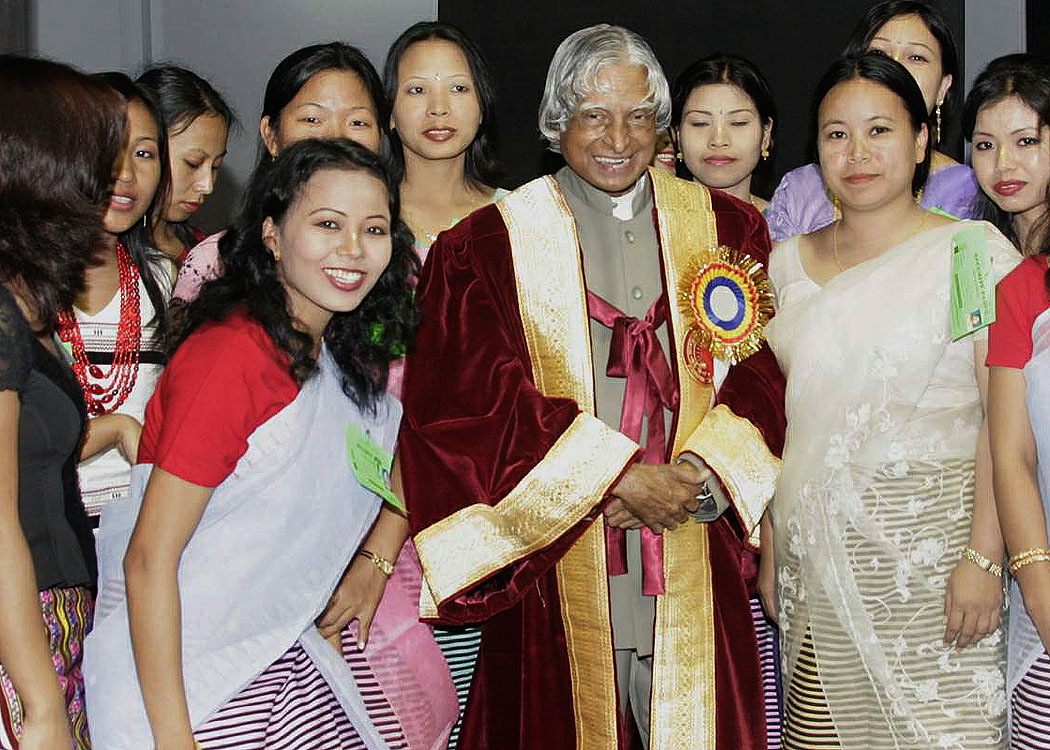

Providing Urban Amenities in Rural Areas (PURA)
The number of PURA units for the whole country is estimated to be 7000. In Manipur, 15 PURA Cluster are envisaged. This provides integrated connectivities to bring prosperity to rural India. These are - physical connectivity of the village clusters through quality roads and transport; electronic connectivity through tele-communication with high bandwidth fiber optic cables and wireless for last mile to reaching the rural areas from urban cities and through Internet kiosks; and knowledge connectivity through education, vocational training for farmers, artisans and craftsmen and entrepreneurship programmes. These three connectivities will lead to economic connectivity through starting of enterprises with the help of banks, micro credits and marketing of the products.
Each PURA cluster will connect about 20 villages depending upon the region and population and will cost about Rs.100 crores (~$20 Million). After initial short-term employment during construction etc., we have to plan for initiating actions for providing regular employment and self employment opportunities in nationally competitive small enterprises in agro processing, manufacturing and services sectors for about 3000 people. If the industrial/business parks are marketed well, they can generate employment opportunities in support sector for about 10,000 people in that cluster. This will provide sustainable economy for the rural sector. In this national mission, bankers can promote entrepreneurship in the rural areas. This will lead to the removal of urban-rural divide. This experience can become a model for other countries to follow.
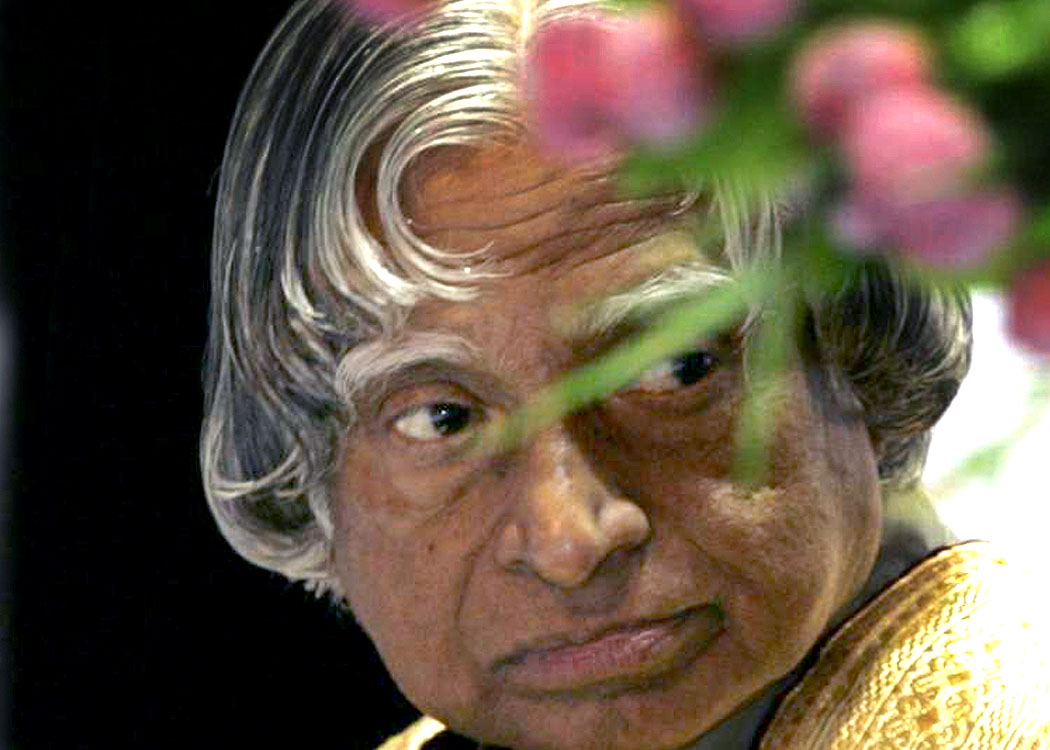
PURA as an Enterprise: A large number of banks have entrepreneurial development programmes. Banks have also been funding Small Scale Industries of different types in various regions. The small-scale industrialist is a promising candidate for becoming the chief executive for managing the PURA complexes in an integrated way. PURA enterprises can also undertake management of schools, health care units, vocational training centres, chilling plants, silos and building a market, banking system and the regional business or industrial units. A new mission mode management style has to emerge for PURA enterprises. It should not be looking for protective legislations to support them. Rather they should be efficient to compete with others. This new PURA enterprise needs partnership from the bank, educational institutions, the Government and also the private entrepreneurs. Educational institutions can train the entrepreneurs for managing the PURA in affiliated colleges of Manipur University and the banks can provide loans to the entrepreneurs for creating and running PURAs as a business proposition. Now let me talk about the Global Human Resoruce Cadre which is one the important mission of the educational institutions for the development of the state and thereby national development.
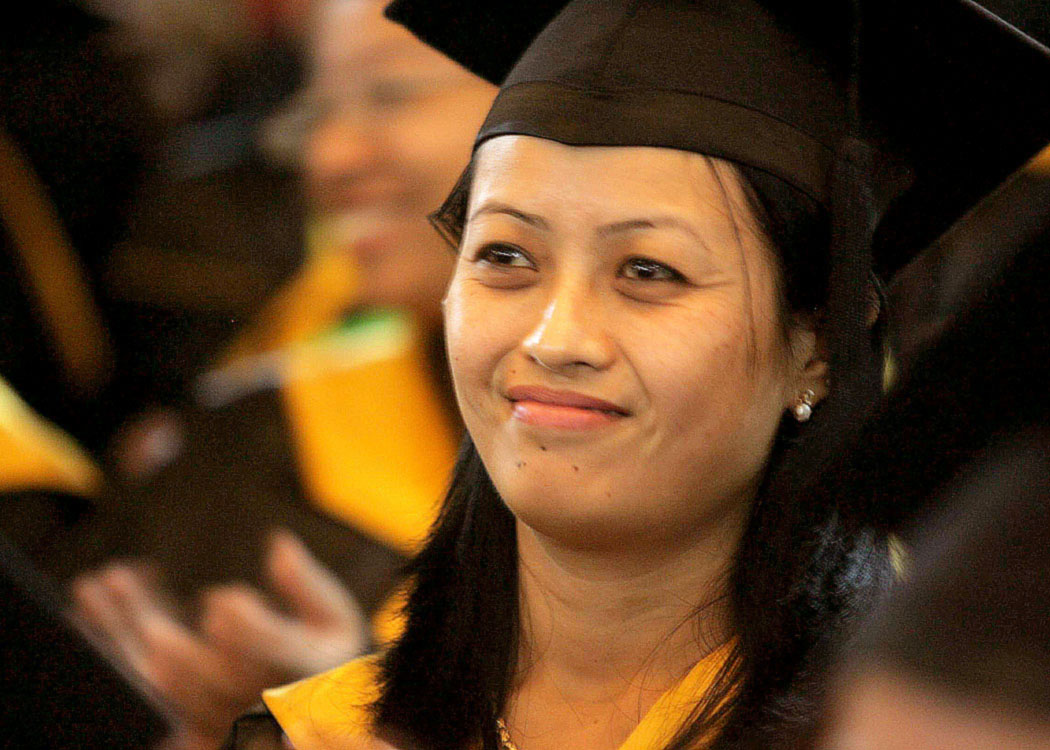

Global Human Resources Cadre
In the 21st century, world needs large number of talented youth with higher education for the task of knowledge acquisition, knowledge imparting, knowledge creation and knowledge sharing. At present, India has five hundred and forty million youth under the age of 25, which will continuously be growing till the year 2050. Keeping this resource in mind, the Universities and educational systems in India have to create two cadres of personnel: (1) Youth with expertise on special skills (2) Youth with higher education with research and technology expertise. These two cadres will be required not only for powering the manufacturing and services sector of India but also will be needed for fulfilling the human resource requirements of various countries. It is essential to increase the throughput of the higher education system from the existing 6% to 20% by the year 2015, 30% by the year 2020 and 50% by the year 2040. Others who are not covered by the higher education system will have world-class skill sets. Hence the Manipur University should undertake the mission of generating the Global Human Resource cadre for the development of the state.
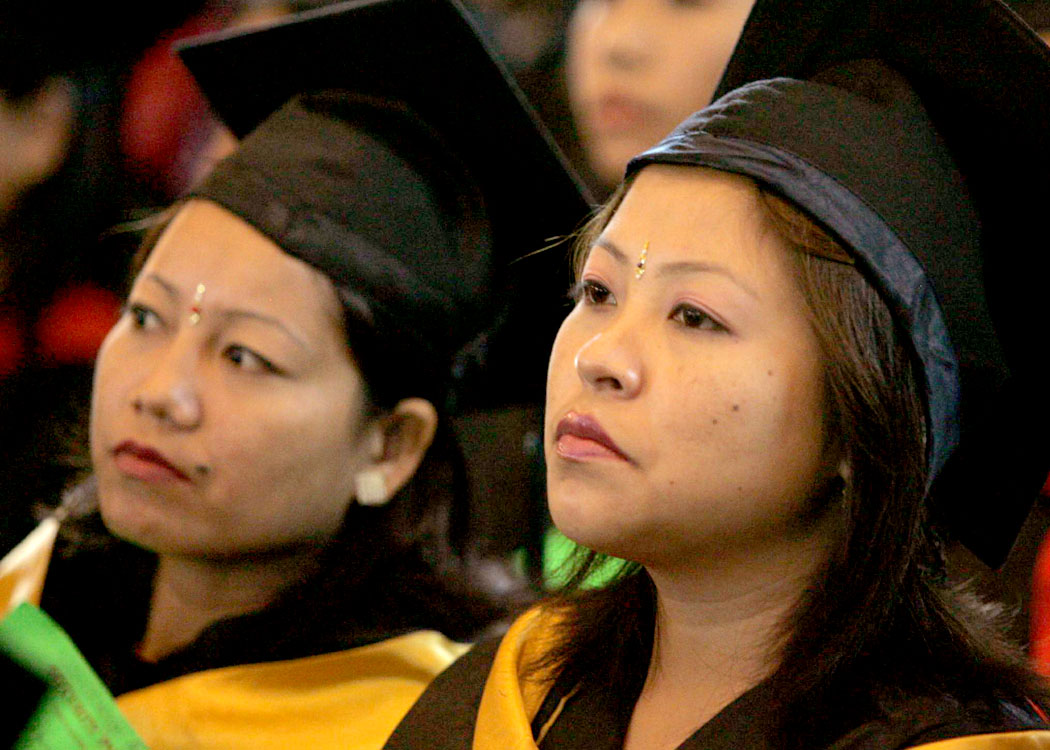

Conclusion: Indomitable Spirit
Now I would like to recall a great clarion call of indomitable spirit, which was given by Sir CV Raman, at the age of 82. The message is still reverberating in my mind: ?I would like to tell the young men and women before me not to lose hope and courage. Success can only come to you by courageous devotion to the task lying in front of you. I can assert without fear of contradiction that the quality of the Indian mind is equal to the quality of any Teutonic, Nordic or Anglo-Saxon mind. What we lack is perhaps courage, what we lack is perhaps driving force, which takes one anywhere. We have, I think, developed an inferiority complex. I think what is needed in India today is the destruction of that defeatist spirit. We need a spirit of victory, a spirit that will carry us to our rightful place under the sun, a spirit, which will recognize that we, as inheritors of a proud civilization, are entitled to a rightful place on this planet. If that indomitable spirit were to arise, nothing can hold us from achieving our rightful destiny.?
Dear Students, would you like to take the Oath on Courage that will be needed throughout your life.
COURAGE for Students
Courage to think different,
Courage to travel into an unexplored path,
Courage to discover the impossible,
Courage to combat the problems
And Succeed,
Are the unique qualities of the youth.
As a youth of my nation, I will work and work with courage to achieve success in all missions.
My congratulations to the all the graduates who are passing out from Manipur University today and my best wishes to all the members of Manipur University in their mission of providing quality education to the youth of Manipur.
May God bless you.
<<Back
|
|